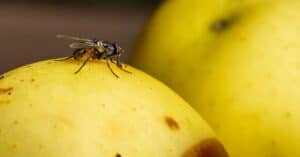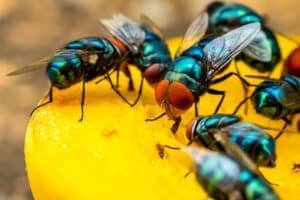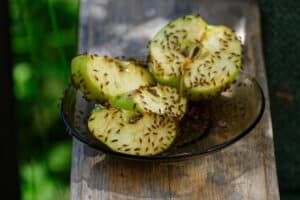They’re tiny and usually go unnoticed, but flies can cause harm despite their size. They can cause an array of issues because the pesky little things travel from trash to plate. Below, we’ll look into the most common types of flies and share a few tips on keeping them from becoming a nuisance in your home.
The 6 Most Common Types of Flies
1. House Fly

The housefly has spread all over the world as a commensal of humans. It is the most common fly species found in houses.
©Fotopstryk/Shutterstock.com
Scientific Name: Musca domestica
House flies are the ones you see zipping about most frequently. Right in the center of their bodies, four stripes run lengthwise.
2. Drain Fly

Drain flies are attracted to standing water and not disgusted by sewage — in fact, this environment is where they usually lay their eggs.
©Cherdchai Chaivimol/Shutterstock.com
Scientific Name: Psychodidae
Drain flies are not very good at flying, despite their names. You can often spot these hairy flies crawling around your drains (or maybe even your gutters). Drain flies love standing water and sewage — in fact, this environment is where they usually lay their eggs.
3. Blow Fly
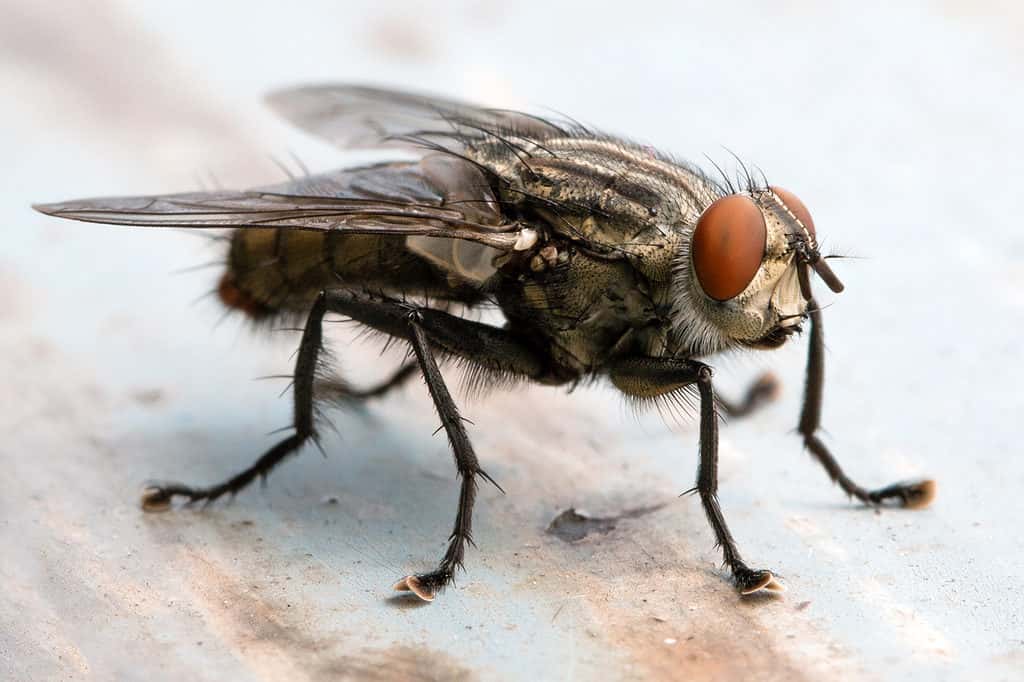
Blow flies can have a metallic look.
©Abel Tumik/Shutterstock.com
Scientific Name: Calliphoridae
Blow flies have distinctive shiny abdomens. They’re kind of metallic. Sometimes, the larvae develop fully in your walls; sometimes, it’s a bit off-putting — they may develop inside a rodent you’ve already caught using traps.
4. Fruit Fly
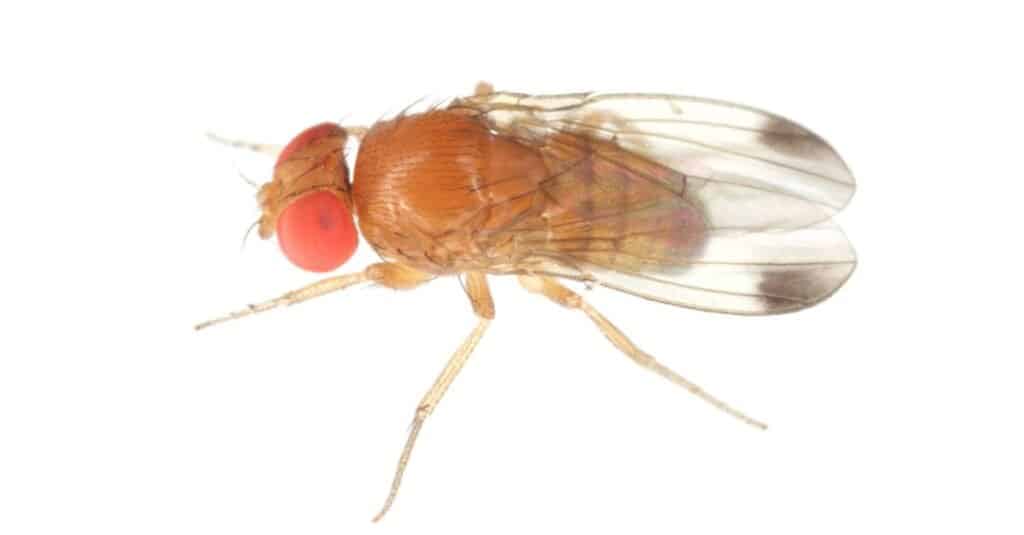
Fruit flies love your fruits and veggies.
©iStock.com/Tomasz Klejdysz
Scientific Name: Drosophila melanogaster
You probably recognize fruit flies easily. They love your fruits and veggies. Although tiny, they’re easy to spot around fermented bits, sometimes right by your trash can.
5. Phorid Fly
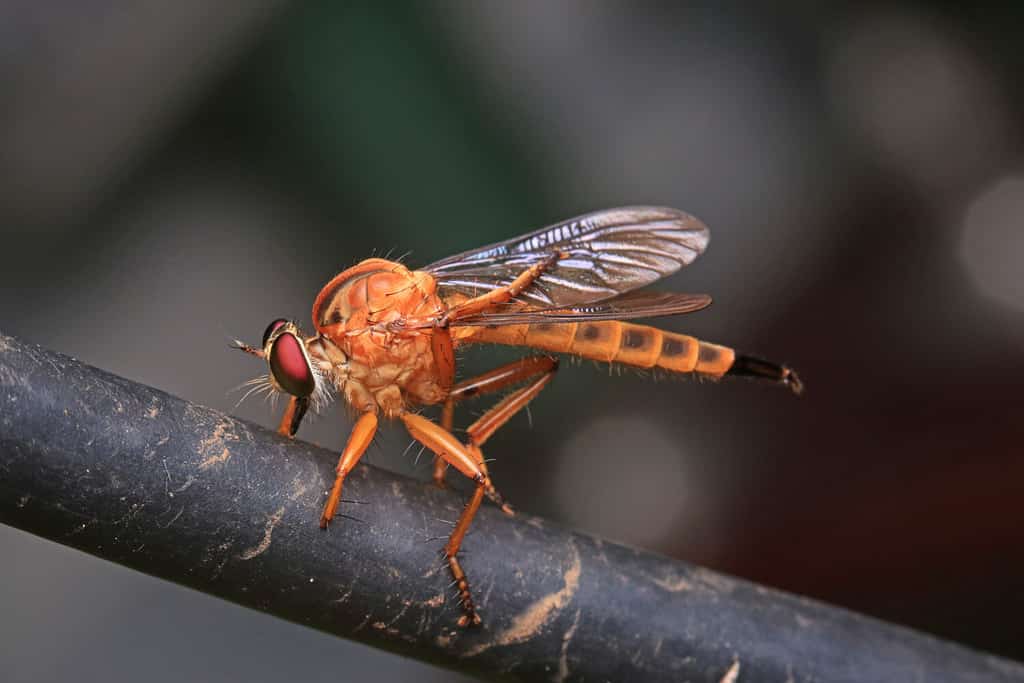
flies have humped backs.
©Siriporn Schwendener/Shutterstock.com
Scientific Name: Phoridae
Phorid flies are about a quarter inch long and can be identified by their appearance — they have humped backs. Usually, these flies frequent restaurant environments (they are also commonly found in hospitals).
6. Fungus Gnat
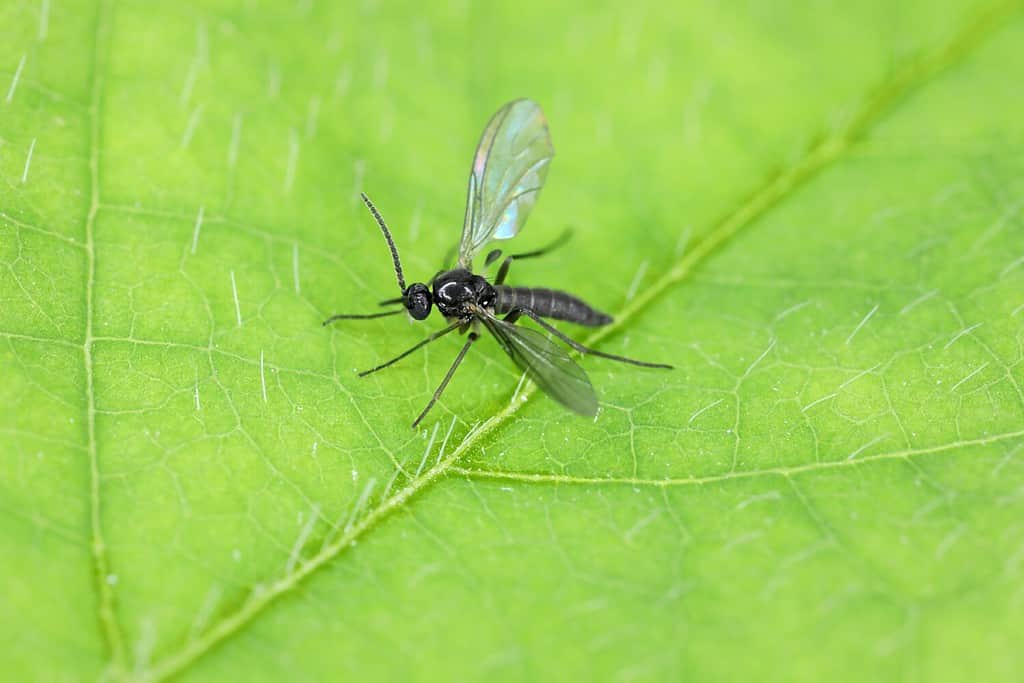
You can spot fungus gnats flying about by your indoor plants and close to the ground where there is soil.
©Tomasz Klejdysz/Shutterstock.com
Scientific Name: Sciaridae
Fungus gnats are common in homes where house plants enjoy shelf space. They’re attracted to damp soil, which is an excellent food source for their larvae. You can spot these buzzing about by your indoor plants and close to the ground where there is soil.
How to Get Rid of Flies in the Home
Flies can be obnoxious, especially around the dinner table, but what options do you have aside from scurrying about with a fly swatter? The first is to seal up your home. Sure, it takes extra effort, but it’s worth it. Repair ripped mesh, use caulk to seal up any gaps around your windows, and set up some magnetic screen doors in areas that lead outdoors.
Think of what attracts each type of common fly and remove it or securely store it within your home. Make it clear there’s nothing a fly could want indoors. You can also harness the power of light. Flies are usually attracted to light, so you can usher them out by darkening indoors and letting them find the sun outdoors. Although fungus gnats enjoy house plants, you can also use house plants to repel flies. Mint and lavender, for example, are good choices.
The photo featured at the top of this post is © Siriporn Schwendener/Shutterstock.com
Thank you for reading! Have some feedback for us? Contact the AZ Animals editorial team.




